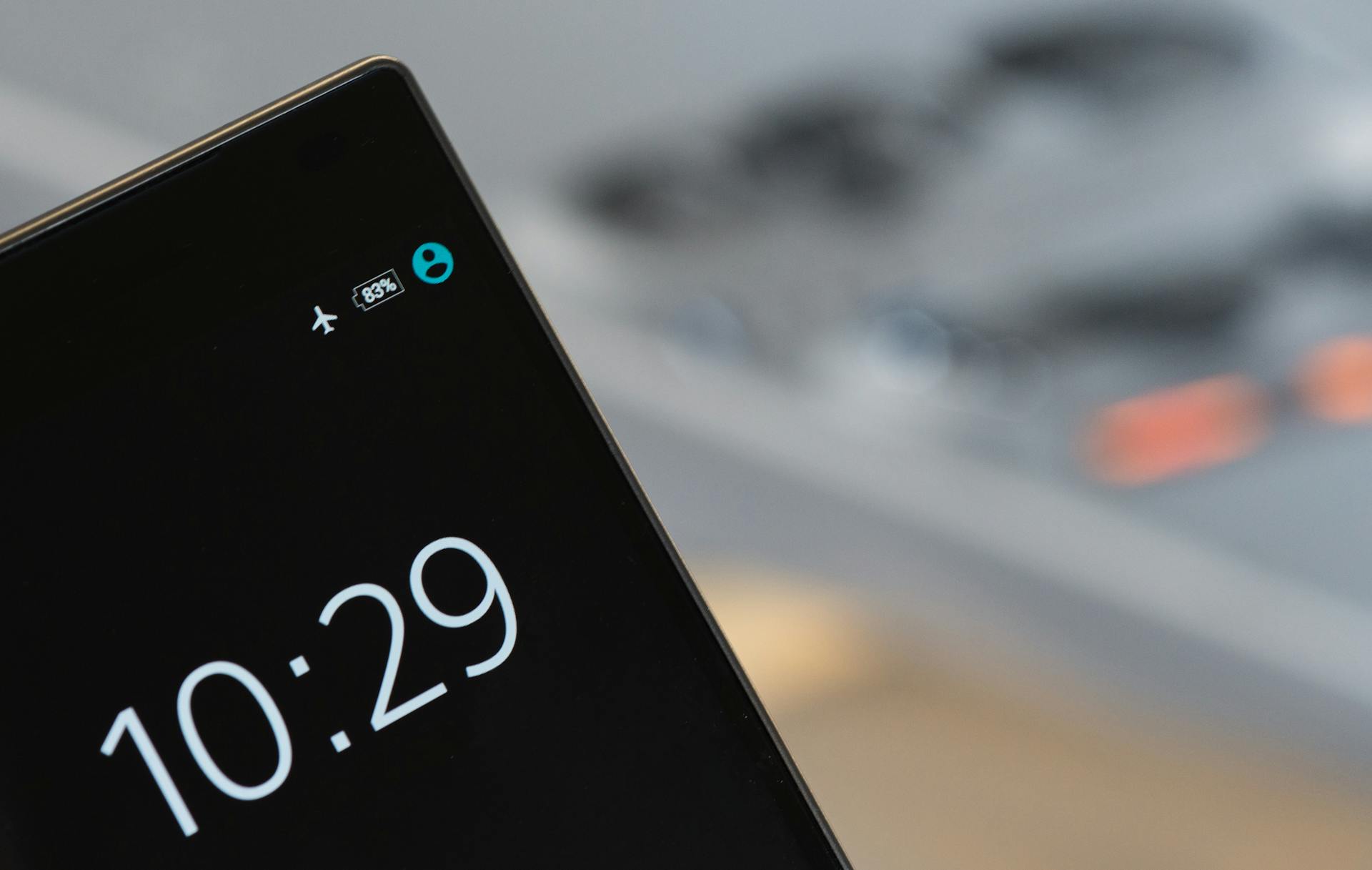Apakah Anda perlu mengaktifkan mode pesawat saat bepergian internasional?
Anda bisa, tetapi Anda tidak harus melakukannya.
Ringkasan
Anda mungkin pernah mendengar bahwa Anda harus mengaktifkan Mode Pesawat saat bepergian ke luar negeri untuk menghindari biaya roaming data. Meskipun benar bahwa mengaktifkan Mode Pesawat akan membantu Anda menghindari biaya roaming internasional, ini adalah metode yang agak ekstrem. Mari kita lihat apa itu Mode Pesawat, dan apakah Anda akan menggunakannya atau tidak.Sungguhperlu menyalakannya saat bepergian internasional.

Apa sebenarnya fungsi mode pesawat?
Sebagian besar, jika tidak semua, ponsel modern saat ini dilengkapi dengan pengaturan "Mode Pesawat". Tujuan utamanya adalah untuk memastikan bahwa perangkat elektronik tidak mengganggu sistem pesawat selama penerbangan.
Saat mode Pesawat diaktifkan, kemampuan perangkat Anda untuk terhubung ke jaringan seluler dinonaktifkan. Jika Anda mengaktifkan WiFi dan Bluetooth, mengaktifkan mode Pesawat juga akan menonaktifkan koneksi WiFi dan Bluetooth di perangkat Anda.
Apa yang dapat saya lakukan saat mode pesawat diaktifkan?
Dengan mengaktifkan mode pesawat, pada dasarnya Anda menonaktifkan kemampuan perangkat Anda untuk terhubung ke jaringan seluler. Ini berarti Anda tidak akan dapat melakukan panggilan atau mengirim pesan melalui seluler, dan Anda tidak akan dapat terhubung ke internet menggunakan data sebagai gantinya.
Namun, meskipun mode pesawat juga menonaktifkan WiFi dan Bluetooth secara default, sebenarnya Anda dapat mengaktifkannya kembali melalui pengaturan ponsel. Artinya, ya, Anda sebenarnya dapat mengaktifkan mode pesawat, tetapi WiFi dan Bluetooth tetap aktif.
Itu juga cara Anda dapat terus menggunakan WiFi dalam penerbangan di pesawat modern atau cara Anda dapat menggunakan headphone bluetooth Anda sendiri saat dalam penerbangan.
Saat mode pesawat dinyalakan di perangkat Anda, semua fitur lain di perangkat Anda tidak akan terpengaruh dan Anda dapat terus menggunakannya seperti biasa selama Anda tidak memerlukan koneksi seluler. Jadi, jika Anda memiliki game yang tidak memerlukan internet, atau jika Anda memiliki media yang diunduh dan siap untuk dikonsumsi secara offline, Anda dapat terus menggunakannya seperti biasa!
Apakah saya perlu mengaktifkan Mode Pesawat saat bepergian internasional?
Anda harus mengaktifkan Mode Pesawat saat Andasedang dalam penerbangan, sehingga perangkat Anda tidak mengganggu sistem komunikasi dan navigasi pesawat.
Namun begitu Anda tiba di tujuan, Anda sebenarnya tidak perlu mengaktifkan Mode Pesawat.
Memang benar bahwa Mode Pesawat dapat membantu Anda terhindar dari biaya roaming internasional. Dengan mengaktifkan Mode Pesawat, perangkat Anda tidak akan dapat terhubung ke layanan seluler, yang berarti Anda pasti tidak akan dikenakan biaya roaming internasional.
Namun, jika Anda mengaktifkan mode pesawat, itu juga berarti Anda tidak dapat melakukan panggilan atau mengirim/menerima pesan apa pun. Anda juga tidak akan dapat terhubung ke internet menggunakan data seluler.
Meskipun mode pesawat adalah cara pasti untuk memastikan Anda tidak dikenakan biaya roaming, itu bukanlah cara yang tepat.hanya jalan.
Berikut adalah beberapa cara lain untuk membantu Anda menghindari biaya roaming internasional:
1. Matikan “Data Roaming” pada jalur utama Anda
Salah satu cara untuk menghindari biaya roaming internasional adalah dengan masuk ke pengaturan perangkat Anda, dancacatopsi Data Roaming untuk jalur utama Anda.
Jika opsi roaming data dinonaktifkan untuk jalur utama Anda, SIM (atau eSIM) Anda tidak akan mengizinkan Anda menggunakan data seluler di jaringan asing.
Dengan cara ini, meskipun Anda tidak dapat menggunakan jalur utama untuk konektivitas data, Anda tetap dapat melakukan panggilan dan mengirim/menerima SMS. Akan tetapi, penting untuk dicatat bahwa panggilan dan pesan internasional juga dapat dikenakan biaya, tergantung pada paket telepon Anda.
2. Dapatkan eSIM perjalanan
A perjalanan eSIMakan memungkinkan Anda tetap terhubung dan menggunakan data seluler tanpa dikenakan biaya roaming internasional.
Pasang eSIM perjalananuntuk tujuan Anda, dan memperbarui pengaturan perangkat Anda untuk menggunakan eSIM perjalanan untuk data seluler Anda.
Dengan melakukan ini, Anda akan menggunakan paket data dari eSIM perjalanan Anda untuk data seluler, bukan jalur utama Anda, yang berarti Anda tidak akan dikenakan biaya roaming data internasional dari jalur utama Anda.
Kabar baiknya adalah meskipun Anda menggunakan eSIM untuk data seluler, Anda tetap dapat menerima panggilan dan pesan di jalur utama! Demikian pula, biaya tambahan mungkin dikenakan pada paket telepon Anda untuk panggilan dan pesan internasional.
3. Hubungi penyedia layanan Anda
Pilihan lain yang Anda miliki adalah menghubungi penyedia layanan Anda dan meminta mereka menonaktifkan roaming internasional pada saluran Anda.
Dengan cara ini, Anda dapat yakin bahwa Anda tidak akan dikenakan biaya roaming internasional. Namun, hal ini juga dapat menyebabkan ketidaknyamanan jika terjadi keadaan darurat di mana Anda perlu segera terhubung.
Dapatkan eSIM perjalanan Nomad untuk perjalanan Anda berikutnya
Pengembarapenawaranpaket data di lebih dari 170 negara, dan Anda dapat yakin untuk menemukan satu yang sesuai dengan kebutuhan perjalanan Anda. Dan jika Anda akan bepergian melintasi beberapa negara, ada jugarencana regionaltersedia agar Anda dapat tetap terhubung dengan lancar saat berpindah negara. Paket data tersedia mulai dari $1,50/GB.
Jaringan yang digunakan eSIM Nomad untuk setiap paket dinyatakan pada detail paket di toko web dan aplikasi, sehingga Anda dapat memeriksa jaringan mana yang didukung sebelum membeli paket.
Dan, jika Anda tidak yakin tentangberapa banyak data yang Anda butuhkan untuk perjalanan AndaNomad juga memiliki**Kalkulator Data**yang dapat membantu Anda menemukan rencana yang paling sesuai untuk Anda. Lihat juga posting blog kami ditips menghemat data saat bepergianuntuk menjaga penggunaan data Anda tetap terkendali saat bepergian.
Nomad juga memiliki tim dukungan pelanggan 24 jam. Jadi, jika Anda menghadapi kesulitan saat menggunakan eSIM, yakinlah akan ada seseorang yang siap membantu Anda menyelesaikan masalah!